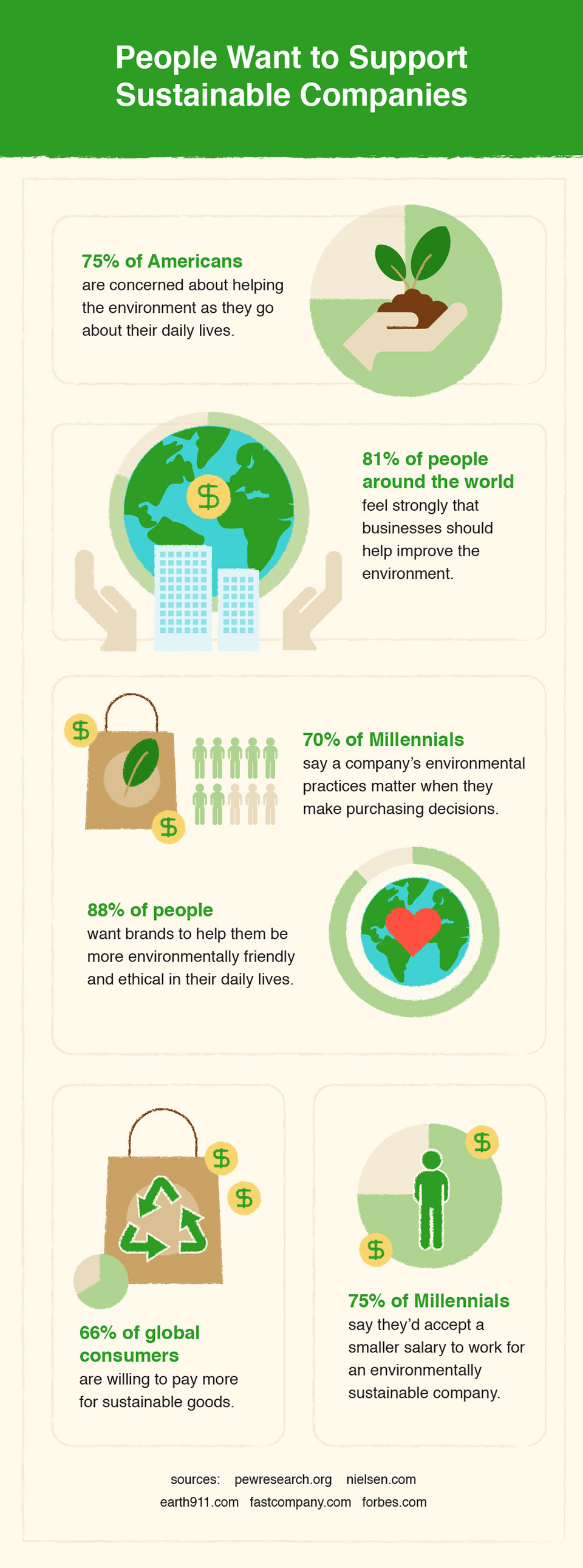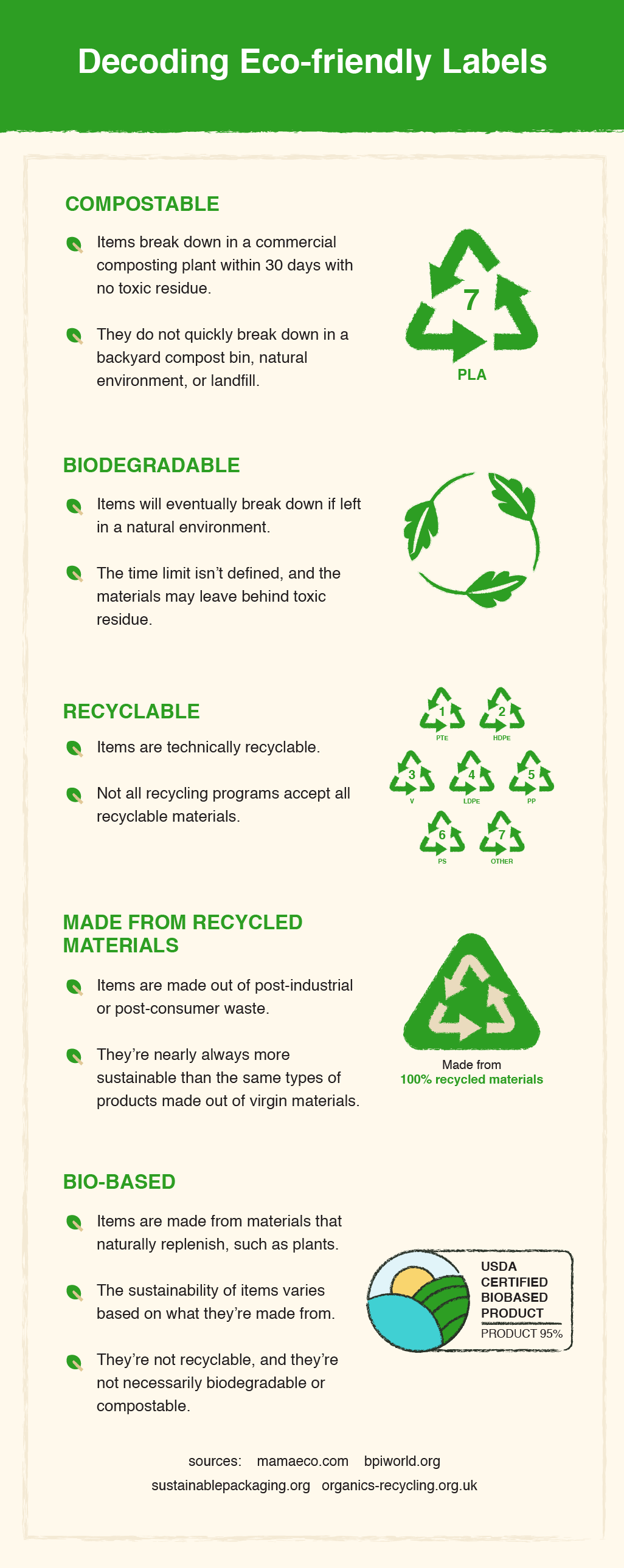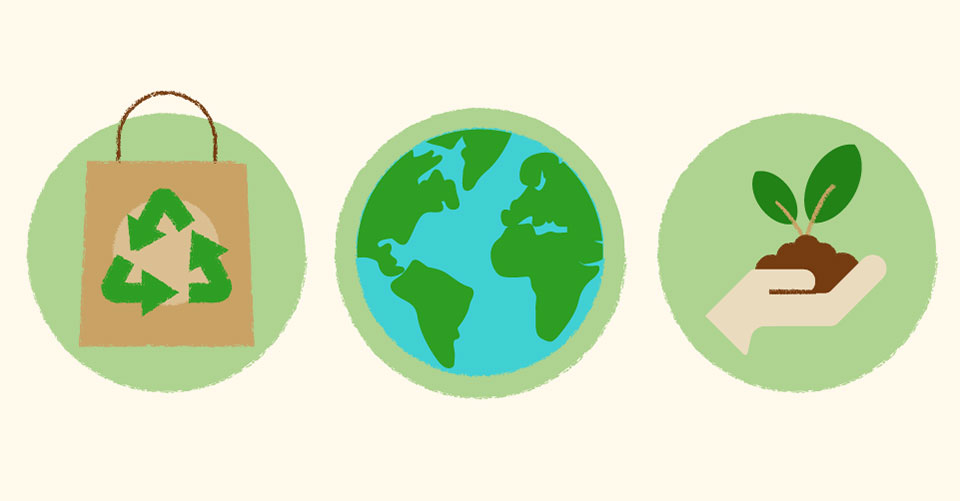The equivalent of a full garbage truck of plastic flows into the oceans every minute. Meanwhile, paper consumption has increased by 400 percent since 1980, contributing to deforestation and air and water pollution. Are you ready for some good news? Your business can do something impactful about plastic and paper pollution by reducing waste.
By downsizing your company's waste, you won't just help the planet. Your business will benefit too. Customers want to buy sustainable products from sustainable companies. In a survey conducted by a marketing and research firm focused on energy and the environment, 70 percent of Millennials said a company's environmental practices sway their purchasing decisions. People want to work for sustainable businesses, too. Three-quarters of millennials in another survey said they'd accept a smaller salary to work for an environmentally responsible company.
When you're improving your business's environmental practices, don't forget about your breakroom. Read on to discover how to lighten your environmental footprint in the breakroom and find sustainable dishware and supplies.

Conduct a Waste Audit
Do you want to get a clear picture of how much waste you create in your breakroom? A DIY waste audit is a great way to find out. Here's how to do it.
Gather these supplies.
- Labels
- Markers
- Large tarp
- Gloves
- Tape measure
- Box cutter
- Camera
- Notebook
- Pen
Instructions:
- Decide on three days to conduct the audit. Don't tell your employees or it could skew the results.
- For those three days, keep and label the waste coming from your breakroom.
- After the third day, lay the tarp outside and pile the bags on it.
- Measure the length, width, and height of the pile.
- Open the bags. Either empty them onto the tarp or use a box cutter to slit one side so you can see inside.
- Photograph the contents.
- Make a note of every material you find.
- Make a rough estimate of the percentage of volume each type of material takes up. For instance, plastic cups may make up about 10 percent of the waste and food scraps may make up 5 percent.
- Note whether the materials are recyclable or compostable, or need to be disposed of as hazardous waste.
- Compile and share the data with your employees. Together, brainstorm ways to reduce your breakroom waste.
Once you've done your audit, you'll have a good idea of where to begin reducing waste. Later, you can repeat your audit to track your progress. Don't forget to keep your employees informed and involved in the process. Remember, most employees want to work at companies that care about the environment, and your waste-reduction efforts may even boost overall employee engagement.

Switch to Reusable Options
It's likely that disposable dishware, cutlery, straws, sugar packs, and creamer cups make up a lot of your waste. If so, start reducing your use of disposable products. When you take into account the lifetime environmental impact of different products, reusable options are nearly always greenest because they can be used thousands of times.
If you have a sink in your breakroom, invest in a dish rack, and consider stocking these reusable items.
- Cups
- Coffee Mugs
- Plates
- Bowls
- Cutlery
- Coffee filters
- K-cup pods
- Stainless steel straws
If you can't afford to supply reusable items for your staff, encourage them to bring a personal set of reusable dishes from home. While you're at it, you can swap out individually packaged sugar packs, creamer cups, and milk cartons in favor of larger shared containers. If you have a place to wash laundry, consider also supplying reusable towels and cloth napkins.
Once you switch to using more reusables, you'll probably need to change some of your routines, too. For instance, you'll have more dirty dishes and may need to brainstorm the best way to wash them. Depending on the size of your company, you could ask everyone to be responsible for their own dishes, take turns doing dishes, or add dishwashing to the custodial duties.
Look for Greener Disposables
If you want or need to keep some disposable options on hand, you probably want to buy the greenest products possible. Bottom line? Disposables are an imperfect solution because no matter what they're composed of, a lot of energy and resources go into making a product that's used only once. But some disposable options are greener than others. Products vary depending on which materials they're made of, how they break down, and their total environmental impact. Here's how to decode the labels on eco-friendly products.
-
Compostable
These items break down in a commercial composting facility (not a landfill) within 90 days and leave no toxic residue in the soil. They're usually made out of plants and organic materials such as corn, potato, tapioca, sugarcane, soy protein, or cellulose. They're not perfect options because industrial agriculture has a detrimental environmental impact, and that's how most corn, soy, potatoes, and sugarcane is grown. (For instance, agriculture is the leading cause of species loss.) But compostable items are usually greener than disposable plastic products, as long as you dispose of them in a municipal composting facility.Look for these labels on a product to determine whether it's compostable.
- ASTM D6400 Certified
- ASTM D6868 Certified
- Recycling code 7 PLA
There are a few caveats you should know about before buying compostable items. First, they're not sustainable if you throw them in the garbage. Landfills are oxygen-free environments, which don't provide the proper conditions for items to decompose. Compostable items also won't break down quickly if they're littered in nature because they require specific conditions to degrade. Also, be sure to verify that your municipal composting program accepts compostable dishware before you buy it because many don't.
-
Biodegradable
These items break down due to the action of microorganisms, including bacteria, fungi, and algae that occur naturally in the environment. They'll even degrade in a landfill without oxygen if given enough time. But there's a big catch. The time limit isn't defined, so it's hard to know how long it takes for a specific product to degrade. Technically, even an item that takes more than 100 years to break down may be called biodegradable. Plus, these materials may leave behind toxic residue. Because of those caveats, this claim isn't that helpful when making purchasing decisions. -
Recyclable
These items can technically be recycled. But because recycling programs are local, they may not be recyclable where you live. Paper coffee sleeves and other paper and glass products are recyclable in most programs. But many municipalities limit plastic recycling, so it's a good idea to verify that your program accepts a material before you buy products packaged in it. Also note: Bioplastics made out of corn, sugarcane, and other plant starches often get tossed in recycling bins, but they're not recyclable and can contaminate recycling plants. -
Made out of recycled materials
These items are made out of items that have been recycled. They may be derived from post-industrial waste or post-consumer waste. Post-industrial waste includes unwanted materials, such as metal scraps, generated during the manufacturing process. Post-consumer waste includes the items we throw into the recycling bin such as newspaper, aluminum cans, and plastic bottles. Paper towels and other products made out of recycled content nearly always have a lower environmental impact than the same types of products made out of virgin materials. -
Biobased
These items are made from resources that naturally replenish, unlike petroleum, which is finite. The plant starches used to make bioplastics are renewable. But to determine how sustainable a specific product is, you must consider which plant it's derived from. Where's it grown? How much land, fuel, and water does it need to grow?Bottom line? Cutlery made from plant starch and other products made from renewable resources are probably more sustainable than their plastic counterparts, but it's hard to know the details without comparing specific lifecycle assessments. Keep this in mind: Biobased products are not recyclable, and they're not necessarily compostable or biodegradable either.

Conclusion
Three-quarters of Americans say they're concerned about helping the environment. If you commit to conducting a breakroom waste audit, supplying more reusable kitchenware, and transitioning to greener disposables, your employees and customers are likely to celebrate your company's commitment to sustainability.
Share this infographic on your site
Abby Quillen
Author of the novel The Garden of Dead Dreams and the editor of two anthologies. Her articles and essays have appeared in YES! Magazine and The Christian Science Monitor and on Common Dreams, Nation of Change, Reader Supported News, The Daily Good, Truthout, and Shareable. She lives in Eugene, Oregon, with her family. When she's not writing, she grows vegetables and weeds, bikes and walks as much as she can, and jots down cute things her kids say.


